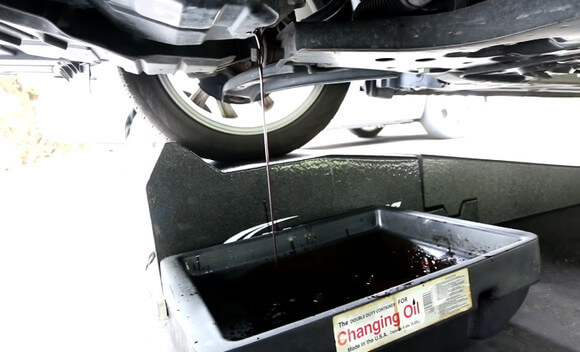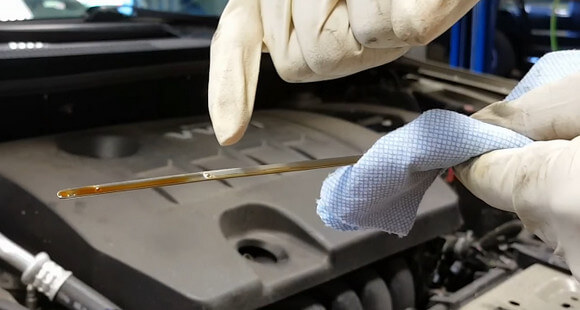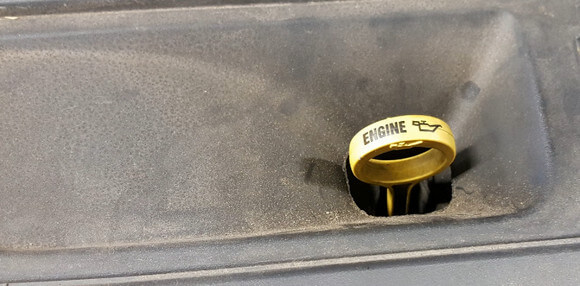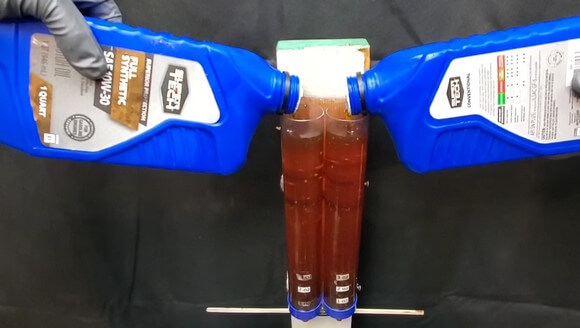The use of oil is required on every type of engine that you use on your vehicle. But, the engine will usually require a specific type of oil to be used. This is because most modern engines are built featuring some specific standards from the manufacturer which also require some special specifications for the oils. The right type of oil will be able to ensure a prolonged service life from your vehicle’s engine. There’s also a possibility that your car warranty will be void if you use an incorrect type of oil.
There are some specifications that the oil will have to meet if you want to use it on late-model cars. For instance, some cars will require a synthetic-blend or full-synthetic oil with low viscosity and multigrade features. This is to make sure, but the engine can minimize friction and the fuel economy is maximized. But, it’s not always easy to get the right type of oil for your engine.

Before choosing the oil that you want to use, you have to inspect the SAE viscosity grade and make sure that the performance standard can comply with the specifications that have been set by API, ILSAC, and ACEA. You will also need to refer to the standards from the vehicle manufacturer. If you are not sure about the specifications of the oil that you need to use, you can consult the manual or ask a professional mechanic from a certified auto repair shop.
The intervals for oil changes will usually vary depending on the model of the car that you’re driving and how you’re driving it. In the past, vehicle owners were recommended to change their oil for every 3,000 miles of travel. But on newer models, the recommended oil change interval is about 5,000 to 7500 miles of travel. The number can even go as high as 15,000 miles of travel on vehicles that require full-synthetic motor oil. Also, avoid judging the color of the engine oil to do the oil changing and always stick with the specifications from the manufacturer.
Oil Change Intervals for Older Cars
Cars with older models usually require oil changing based on how far they have been driven. Usually, they have two maintenance schedules. Cars that are driven mostly under normal operation will require intervals that are different from cars that are driven under “severe service”. Your car falls under the latter condition if it meets one or more conditions below:
- Your car is driven primarily for short trips which are under 5 miles of travel.
- Your car is driven frequently under cold, hot, or dusty climates.
- Your car has sustained a lot of stop-and-go driving conditions.
- Your car carries a lot of heavy loads frequently.
If you can see that your vehicle falls under one or more of the conditions above, then you will need to do a more rigorous maintenance schedule to get the prime condition of your vehicle. On the other hand, if you only drive the car on normal conditions, then you will not need to spend a lot of your money on frequent oil changes or other maintenance work.

Oil Change Intervals for Newer Cars
If you have recently bought a new car from the latest models, then there is a possibility that your car has a feature that monitors the condition of the oil inside the engine. The system will notify you by sending an alert if the oil needs to be changed. In the past, the monitoring system would measure the time of use and the travel miles, but the newer technology will actually analyze the operating conditions of your vehicle to see if the oil has degraded over time. Some manufacturer’s manuals even eliminate the recommendations for a more frequent oil change for cars that are frequently driven under severe service conditions. This is because the system will recommend an oil change if it detects a heavy-duty operation, which will require you to spend more money to buy new oil.
A certified technician should be able to reset the monitoring system for the oil condition when your vehicle’s oil has been changed. You can also reset it yourself by following the instructions from the manufacturer’s manual.
Even though newer vehicles require less frequent oil changes, you will still need to perform a visual check to see the level of oil every month and top it up if required. Most engines will usually consume around a quart of oil for every 700 miles of travel. The proper oil level in the engine will help you to maintain the optimal condition of the engine and avoid costly repairs. Even if the vehicle is not driven frequently, you will still need to perform an oil change at least once a year.
When to Change Oil
Due to the fact that the technology that the car manufacturers use to build their engines has changed over time, the oil change intervals have also changed. Instead of relying on recommendations from other mechanics, you should always refer to the owner’s manual that comes with your vehicle.
Some newer cars will also send the owners reminders and notifications regarding the correct time to change the oil. The notifications will be sent after certain miles have been reached or depending on the driving condition.
The owner should always change their oil promptly after receiving the notifications.
How Often to Check the Oil Level?

Vehicle owners should always check the level of their oil in the engine periodically. Latest surveys have shown that even modern cars require frequent top-up to keep up with the engine oil level.
It might also be suitable to check the level of engine oil at least once a month and perform necessary repairs when you notice an oil leak.
You can usually use traditional dipsticks to perform a manual inspection of oil levels. Modern cars might have automatic detection to monitor the oil. You should always consult the vehicle’s manual to get the specifications from the manufacturer.
If you want to use the dipsticks, make sure that the car has been parked on an even surface and be careful about hot areas under the hood if the car has recently been driven.
You can start the manual inspection process by turning off the engine and find the dipstick that is usually located under the hood. Insert the stick until it gets all the way in.
After that, pull the dipstick out and check the point where the oil stopped. You can usually notice the indicator for a proper oil level on the dipsticks. If the result is within the threshold, then it means that you have a proper oil level.
Make sure to top-up your oil if the point is below the minimum mark.
Another thing that you should pay attention to is the color of the oil. The normal oil color is supposed to be black or brown. If it contains any light or milky appearance, this might be an indication of a coolant leak inside the engine. If you notice any metal particles in the oil, there might be internal engine damage. Get your car to get inspected by a professional mechanic as soon as possible.
If everything is alright, you can put the dipstick back where it belongs and close down the hood.

How Often to Change the Oil?
There’s a popular rule of oil change, which is about every 3 months of every 3,000 miles of travel. This guidance might not be suitable for you especially if you have newer vehicles. Newer vehicles usually only require the owners to change the oil once every 6 to 12 months or 7500 to 10,000 miles of travel.
Even though some mechanics try to get you to change your oil, you should always refer to the owner’s manual that comes with your vehicle. The guidance in the manual should keep your engine well-lubricated and work properly if you follow it through.
Even if your vehicle is not being used frequently, the condition of your oil can degrade over time. Vehicle manufacturers usually suggest that you change your oil at least once or twice a year.
Aside from the fact that the condition of your oil will degrade, moisture can build up and contaminate the engine oil. If you let this happen, it might be able to shorten the life expectancy of your engine.
How to Choose the Right Oil for Your Car
Choosing the type of oil that is required for your vehicle should always be based on the owner’s manual. You don’t need to buy expensive synthetic oil if the engine doesn’t require you to do so.
You can also control the cost of engine oil that you want to use for your car by checking the specifications of the required oil type from the number printed on the cap of the oil bottle.
You also don’t need to use a special type of motor oil on an old car if the engine is running well. If you don’t have an owner’s manual for that specific car, you can always consult the local dealer to get a solution for your vehicle.
Do You Need Synthetic Oil?

Synthetic oil can cost a lot more compared to conventional types of oil. Only use this type of engine oil if the manufacturer specifies the use.
Synthetic oil usually can withstand higher temperatures and is also more effective at preventing sudden breakdowns.
The usage of this type of special oil can’t even prolong the life expectancy of your engine.
Synthetic oil also works best if you live in an area that can experience very cold winters or hot summers. This type of oil can prevent breakdowns due to significant changes in climates. But, even with the usage of synthetic oil, he was told to change her engine oil at least once or twice a year even if the vehicle is not driven frequently.
Another advantage of using synthetic oil is that it can prevent the building up of oil deposits in the form of sludge inside the engine. These deposits can usually put a blockage in the oil line and can even damage the engine. By using synthetic oil, you can extend the expected lifespan of your engine.
